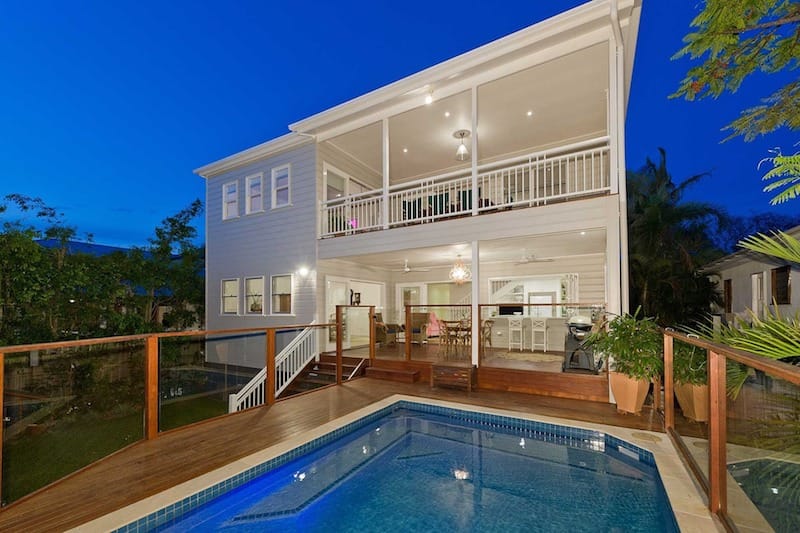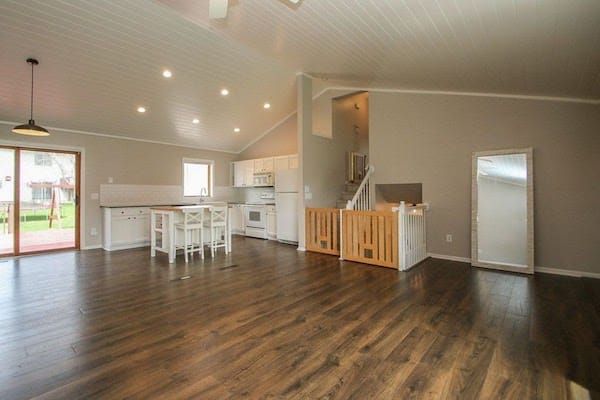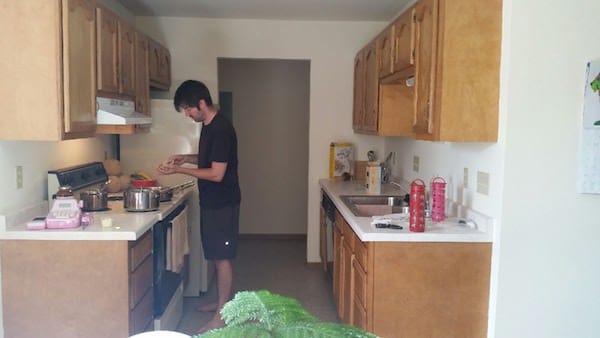
Twenty-nine thousand dollars. That’s how much we spent on updates and maintenance in the last two years we lived in our house. It was higher than either of us had considered and yet, we realized that we would have spent tens of thousands more if we had stayed in our house. It’s worth taking a look at why this is, and what we can do to save ourselves if we get back into home ownership.
The Updates that Never End

Much of our remodeling in the last few years had been focused on what we felt was necessary in order to capture the most value when selling our house. Beyond these, we left our house with a few future projects - replacing the carpeting, installing a dishwasher, replacing the kitchen appliances and water heater, and fixing up the landscaping. In the back of our heads, though, we had a list much longer than that.
If we had chosen to stay in our house for the next 20 years, we would have done a whole lot more:
- Redo the railing around our porch - 20-year-old worn plastic has lost its appeal
- Add a fireplace to the living room
- Replace our open deck with a screened-in deck. Buggy Wisconsin summers are a lot nicer when they can’t get to you
- Finish the walls on the interior of the garage, install better storage solutions and shelving
- Build a pergola over the stamped concrete patio to create a shaded outdoor space
- Replace fiberglass tub/shower in the master bathroom with a tiled shower and glass door
- Move the washer and dryer out of the basement, up to the same floor as the bedrooms
- Replace the roof - maybe a nice metal one or some cool Tesla solar shingles?
Our discussions about future home updates were like a financial version of “The Song That Doesn’t End”. We’d get to the end of the list and then think of one more thing…and then another…and then another.
Playing that game would likely have cost us nearly six figures in updates over the next two decades.
Every one of these updates would have increased the value of our home and made it look more like something out of a design magazine. On the flip side, they would have seriously interfered with our financial ability to pursue other dreams.
One of the big dreams we’ve been able to fulfill recently was our desire to downsize. We sold our house and chose to rent an apartment.
As we changed our environment, we suddenly have a big, new constraint.
As renters, we literally cannot update our apartment. Sure, we can swap out pieces of furniture, but we aren’t allowed to paint the walls, update the trim, install recessed lighting, take down walls, or anything else that our old selves would be itching to do.
You’d think moving from an environment where we can mold our space however we liked to one where we can’t make the smallest of changes would feel like a loss of freedom.
It’s actually been quite the opposite.
The Benefit of Intentional Constraints

Surprisingly, we’ve found a sense of peace and freedom from the fact that we don’t have to consider remodeling as an option.
Who cares about the perfectly 1990’s oak trim when you can’t do anything to change it? So what if the linoleum flooring in the kitchen is the antonym of fancy? There’s nothing we can do about it.
Our lack of ability to take action has left us feeling freer than we did before (Tweet this )
The truth is, what we thought was freedom before was really us becoming captive to something else - an addiction to home updates.
Our remodeling started as a positive - giving my wife a creative outlet and a canvas to apply her design skills. It was a great way for her to pursue her dreams and I don’t regret a penny we spent.
But beyond the positive lurked a dangerous next step to our remodeling experiments. We found ourselves looking at what we could do to our house to make it a place we’d be happier living in. We knew it was too big for our lifestyle, and yet we kept dreaming up things we could do to try to make it better for our family.
Shrinking your house isn’t something I’ve heard of or seen and I don’t think our zoning laws and deed restrictions would allow it.
So instead, we focused on the dream list of nicer finishes and improving our outdoor spaces.
It was an endless list of updates that, even if we did them all, would have left our old house still feeling just not right for our family.
As we’ve moved into our apartment, we’ve learned an important lesson.
Home isn’t about a building, the walls, the furniture, or finishes. It’s about the people, the time together, and the life we are able to live.
Living in our apartment has enabled us to spend a whole lot more time together as a family. Based on that, this place is home.
Living in our apartment has been a lesson in finding contentment with what we have.
Our Next Home
Over the last several years, we’d cut our spending on groceries, clothing, furniture, transportation, gifts, and even utilities by asking a simple question:
Is spending money on this more important than the other goals we’ve got?
We had been trying to turn our old house into the home we wanted, but it wasn’t ever going to be that - it was bigger than we needed and didn’t fit the lifestyle we wanted. No amount of updates was going to change that.
As we start thinking about what our future home may be, we hope to bring a new attitude with us.
We know that old habits die hard and we’re going to have a strong temptation to get back into a big remodeling kick if we go back into home ownership. One of our best weapons for this is being careful to get a home that’s the right size, and have a defined list of what updates we want going in.
If we buy a fixer-upper, the goal would be to remodel only the things that are truly necessary and that encourage us to spend quality time together.
We’ll need to remind ourselves of the dreams we’ve been able to accomplish so far and the future dreams we’d be foregoing by dumping tons into our house.
Most of all, we’d need a reminder that our home is where the five of us live - whether big or small, new or old, fancy or bland.
What’s Your Spending Addiction?
Beyond helping make our mini-retirement a reality, selling our house saved us tens-of-thousands of dollars in future updates we invariably would have made if we hadn’t broken out of our remodeling addiction. Now we’re in a state where we can be more mindful of our money and keep it focused where it belongs - making a life of better experiences as a family.
I suspect that even the thriftiest of us have weak spots. What’s yours? Have you figured out a way to keep your addiction in check? What advice would you give to others?
